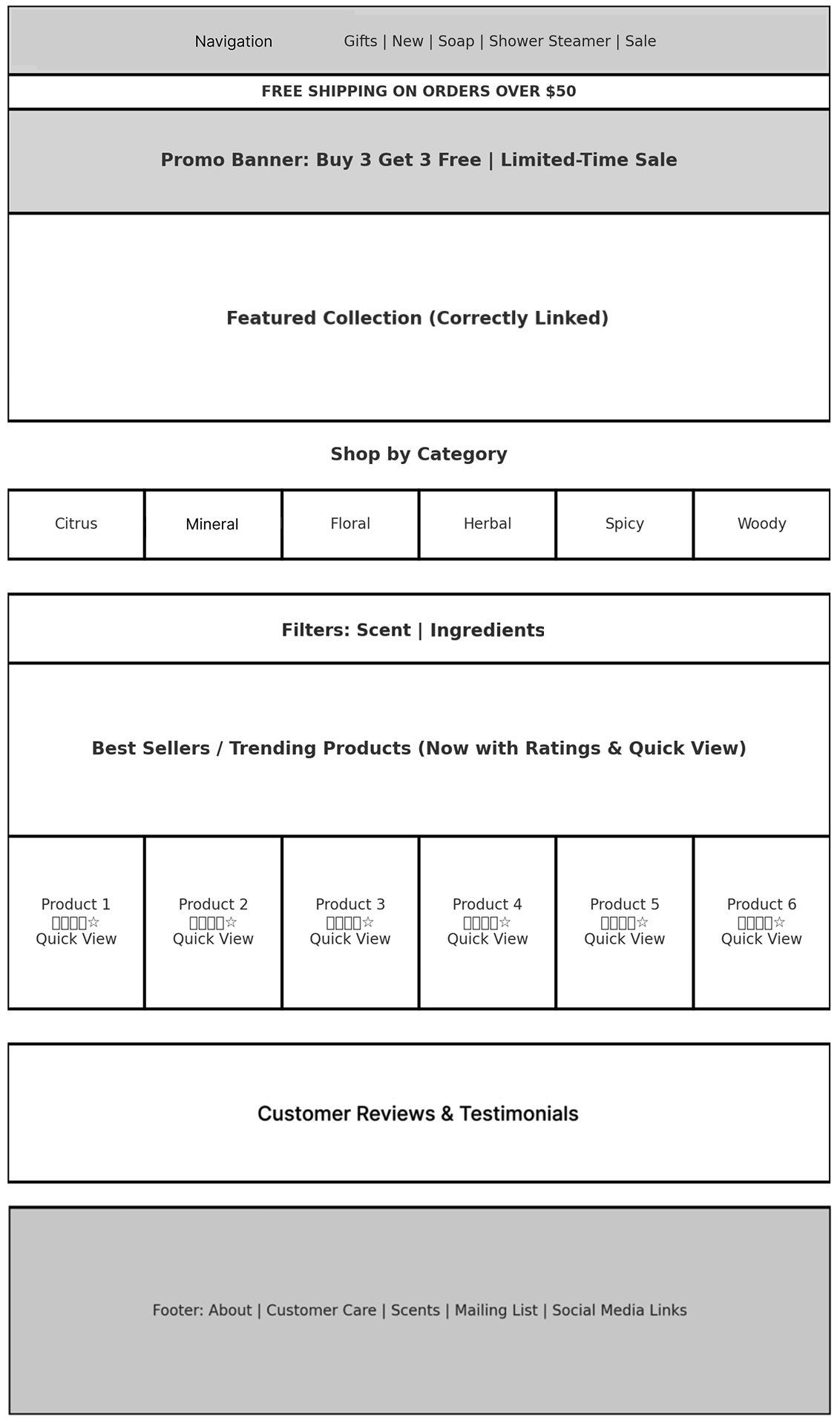Role and Contributions:
Market Research, Interview, Competitive Analysis, Ideation, UI Design, UX Design, Usability Testing, Prototyping
Tools:
Figma
Sector:
E-commerce Website, Retail
Role and Contributions:
Market Research, Interview, Competitive Analysis, Ideation, UI Design, UX Design, Usability Testing, Prototyping
Tools:
Figma
Sector:
E-commerce Website, Retail
Users struggled to find different soap categories due to poor product discoverability and navigation issues, leading to frustration and confusion during their shopping experience.
User Pain Points:
The homepage only displayed two products, leading users to believe that no additional options existed. Other product categories were represented by icons that were vague and difficult to recognize, which made it hard for users to navigate to the full product list. Additionally, the main banner image was misleading, as it appeared clickable but instead led to an error page, disrupting the shopping experience.
This confusing layout and navigation issues led to user frustration, higher bounce rates, and lost sales, as many users abandoned the website before discovering the full product selection.

I believed that improving product discoverability through a better visual hierarchy, clearer category labeling, and fixing navigation errors would enhance the user experience and boost conversions
To address this issue, the following UX improvements were proposed:

By implementing these user-centered design enhancements, I aimed to increase engagement, reduce bounce rates, and improve overall usability, ultimately leading to higher sales conversions.

Product Visibility Matters: Displaying all product categories upfront significantly improved user engagement and reduced bounce rates.
User-Centered Navigation Wins: Replacing vague icons with real product images increased category interaction and helped users find products faster.
UX is an Ongoing Process: Continuous A/B testing and user feedback will help refine navigation and filtering for an even better shopping experience.
By addressing these key usability challenges, Lovendr enhanced product discoverability, leading to a smoother browsing experience and increased conversions.